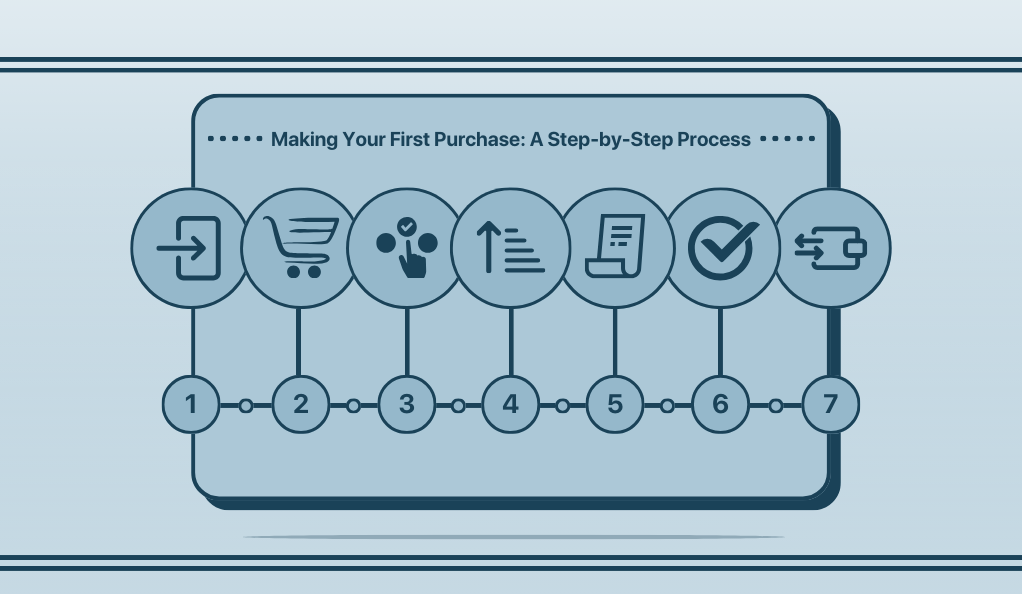Cryptocurrency is a digital currency secured by cryptography, making it nearly impossible to counterfeit. Originating with Bitcoin in 2009, it operates on a decentralized system using blockchain technology. With thousands of cryptocurrencies like Ethereum and Litecoin available, it offers a combination of quick transaction capabilities, privacy, and investment potential. However, the cryptocurrency market is known for its volatility and complexity. For those interested in investing or using it, understanding the basics of how it works, its risks, and its opportunities is crucial. This guide provides an essential starting point for navigating the world of cryptocurrency.
Decide Where to Buy Crypto: Choosing the Right Exchange.

When stepping into the world of cryptocurrency, one of the first decisions you’ll make is choosing an exchange. Exchanges are platforms where you can buy, sell, and trade cryptocurrencies. There are three main types:
Centralized Exchanges: Ideal for beginners, centralized exchanges act as intermediaries in transactions, providing a layer of security and ease of use. They typically sell crypto at market rates and earn revenue through various service fees. Popular examples include Coinbase, Gemini, and Kraken. These platforms are user-friendly and often offer a wide range of cryptocurrencies and storage options. However, they can be targets for hackers due to the significant volume of crypto and cash flowing through them.
Decentralized Exchanges: These exchanges operate without a central authority, offering direct peer-to-peer transactions. They can be more complex to use and might require a deeper understanding of blockchain technology. Decentralized exchanges are less prone to hacking but offer less recourse if something goes wrong with a transaction.
Hybrid Exchanges: Combining elements of both centralized and decentralized models, hybrid exchanges aim to offer the security of a decentralized exchange with the user-friendliness of a centralized platform.
When choosing an exchange, consider the following factors:
- Security: Look for exchanges with strong security measures like two-factor authentication (2FA) and cold storage of assets.
- User Interface: For beginners, a simple and intuitive interface is crucial.
- Supported Cryptocurrencies: Ensure the exchange supports the cryptocurrencies you are interested in.
- Fees: Be aware of transaction, withdrawal, and other associated fees.
- Customer Support: Good customer service can be vital, especially for new users.
Setting Up Your Account: Verification and Security
Once you’ve chosen a cryptocurrency exchange, the next step is to set up your account. This process is vital for ensuring the security and legitimacy of your transactions. Here’s how to do it:
- Registration: Start by providing basic information like your name, email address, and password. Some exchanges may require additional details for identity verification.
- Identity Verification: Known as Know Your Customer (KYC), this step involves verifying your identity to prevent fraud. You’ll likely need to upload government-issued ID documents such as a passport or driver’s license.
- Security Setup: Implement security measures like two-factor authentication (2FA), which adds an extra layer of security beyond just a password. You might use a mobile app, SMS, or an email for this.
- Linking Payment Methods: Connect a payment method to fund your account. This could be a bank account, credit/debit card, or even another cryptocurrency wallet.
- Account Limits: Be aware that most exchanges have deposit and withdrawal limits, which can vary based on your verification level and the payment method used.
- Familiarize with the Platform: Spend some time navigating the platform to understand how to view your balance, place orders, and check market prices.
Choose How You’ll Pay: Funding Your Account

Selecting a payment method is a key step in buying cryptocurrency. Here are the primary options:
- Paying with Fiat Currency: Most beginners will use fiat currency (like the U.S. dollar) to buy cryptocurrency. Popular cryptocurrencies are widely available for purchase with fiat. Before buying, you may need to fund your account with the chosen fiat currency.
- Paying with Other Cryptocurrencies: If you already own cryptocurrencies, you can use them to trade for others. Ensure your exchange allows trading between the specific cryptocurrencies you’re interested in.
- Costs and Fees to Consider:
- Transaction Fees: Most exchanges charge fees for buying and selling cryptocurrencies. These can vary based on the payment method and the type of transaction.
- Deposit and Withdrawal Fees: Some exchanges also charge fees for depositing and withdrawing funds.
- Credit Card Fees: While some exchanges accept credit cards, this method can incur higher fees and has risks due to the volatile nature of cryptocurrency.
- Tax Considerations: Be aware that selling crypto for fiat money or trading it for other crypto might require you to report these transactions for tax purposes.
- Payment Method Comparison Table:
| Payment Method | Fees | Risk Level | Speed |
|---|---|---|---|
| Bank Transfer | Low | Low | Slow |
| Debit Card | Medium | Low-Medium | Fast |
| Credit Card | High | High | Fast |
| Crypto Swap | Varies | Medium | Varies |
Understanding Cryptocurrency Wallets: Secure Your Investment
Securing your cryptocurrency is as important as buying it. This is where cryptocurrency wallets come in. They are digital tools that allow you to store and manage your crypto assets. There are two main types of wallets:
On-platform Storage: Many beginners choose to keep their cryptocurrency on the exchange where they bought it. This is convenient as the exchange manages the security and storage. However, if the exchange experiences a security breach, your funds could be at risk.
Noncustodial Wallets: For enhanced security, you might consider storing your cryptocurrency in a private wallet, which can be divided into:
- Hot Wallets: These are online wallets that are convenient for frequent trading but are vulnerable to online security threats.
- Cold Wallets: These are offline wallets, such as hardware wallets, that are not connected to the internet, making them more secure but less convenient for frequent trading.
Making Your First Purchase: A Step-by-Step Process

Buying your first cryptocurrency can be thrilling yet intimidating. Here’s a simplified guide to help you through the process:
- Log Into Your Exchange Account: Access the exchange where you registered and completed the setup process.
- Navigate to the Buy Section: Look for a ‘Buy’ or ‘Trade’ option on the platform.
- Select the Cryptocurrency: Choose the cryptocurrency you wish to purchase. Popular choices for beginners include Bitcoin (BTC) and Ethereum (ETH).
- Enter the Purchase Amount: Decide how much you want to invest. Many exchanges allow you to buy fractions of a coin, enabling you to start with smaller amounts.
- Review Fees and Total Cost: Exchanges typically display the fees and the total cost of the transaction before you confirm the purchase.
- Confirm the Transaction: After reviewing all details, confirm your purchase. The exchange will process the transaction, and the purchased cryptocurrency will be added to your account.
- Transfer to a Wallet (Optional): For added security, consider transferring your cryptocurrency to a personal wallet, especially if you plan to hold it long-term.
Key Tips for First-Time Buyers:
- Start Small: Begin with a small investment to familiarize yourself with the process.
- Market Research: Keep informed about market trends and the specific cryptocurrency you are investing in.
- Security: Always prioritize security, both in terms of exchange choice and wallet storage.
Post-Purchase Considerations: Investment Strategy and Risk Management
After purchasing cryptocurrency, it’s essential to develop a strategy for your investment and understand risk management.
- Developing an Investment Strategy: Your cryptocurrency investment should be part of a broader investment strategy. Consider your financial goals, risk tolerance, and investment time horizon. Diversify your portfolio to mitigate risks, and avoid allocating more than a small percentage of your total investments to high-risk assets like cryptocurrency.
- Understanding Your Risk Tolerance: Cryptocurrency is known for its volatility. Assess your comfort level with potential value fluctuations and invest accordingly.
- Active vs. Passive Investment Approach: Decide whether you’ll be an active investor, frequently buying and selling based on market trends, or a passive investor, holding your assets over a longer period (often referred to as ‘HODLing’ in the crypto community).
- Regular Contributions and Dollar-Cost Averaging: Consider making regular investments over time, a strategy known as dollar-cost averaging. This approach can help mitigate the impact of volatility.
- Staying Informed: The crypto market is dynamic and requires staying updated with the latest trends and news. Regularly educate yourself to make informed decisions.
- Tax Implications: Be aware of the tax consequences of selling or trading your cryptocurrency and ensure compliance with your local tax laws.
Conclusion
In this guide, we’ve covered the essentials for buying your first cryptocurrency, from selecting an exchange to understanding wallets and investment strategies. Remember, the key to success in the crypto world is informed decision-making, balanced risk management, and continuous learning. As you begin your journey, stay patient, stay informed, and align your actions with your financial goals. Welcome to the dynamic world of cryptocurrency investing!
